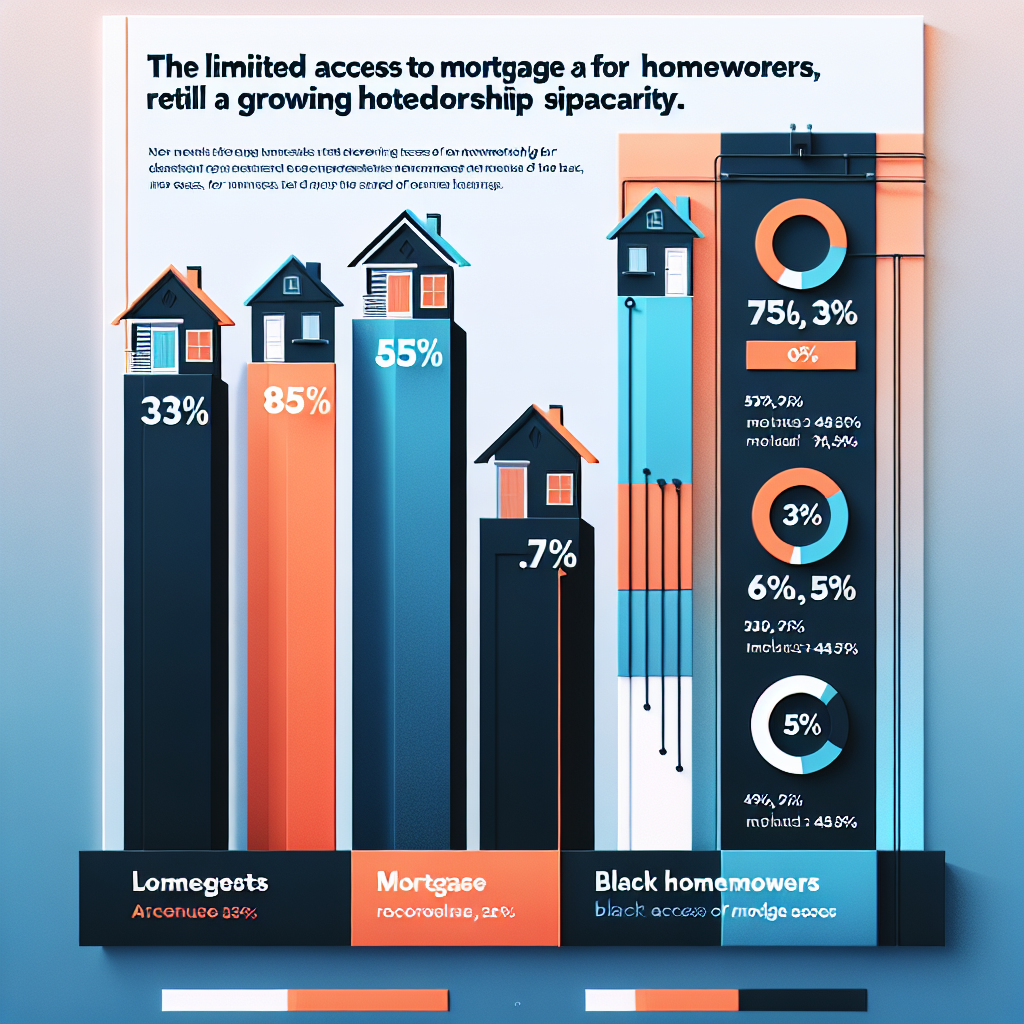Limited Mortgage Access for Black Buyers Fuels Growing Homeownership Disparity
Homeownership has long been considered a cornerstone of the American Dream, offering financial stability and a means to build generational wealth. However, for many Black Americans, this dream remains elusive due to systemic barriers in accessing mortgage loans. This article explores the growing homeownership disparity fueled by limited mortgage access for Black buyers, examining the underlying causes, current statistics, and potential solutions.
The Historical Context of Mortgage Discrimination
The roots of mortgage discrimination against Black Americans can be traced back to the early 20th century. Practices such as redlining, where banks would deny loans to residents in predominantly Black neighborhoods, have had lasting impacts. Although the Fair Housing Act of 1968 made such practices illegal, their legacy persists in the form of economic disparities and reduced access to credit.
Current Statistics Highlighting the Disparity
Recent data underscores the ongoing challenges faced by Black homebuyers:
- According to the Urban Institute, the homeownership rate for Black Americans was 44.1% in 2020, compared to 74.5% for White Americans.
- A 2021 report by the National Association of Realtors found that Black applicants were twice as likely to be denied a mortgage compared to their White counterparts.
- The Federal Reserve’s 2019 Survey of Consumer Finances revealed that the median net worth of White households was nearly eight times that of Black households, a gap exacerbated by homeownership disparities.
Barriers to Mortgage Access for Black Buyers
Several factors contribute to the limited mortgage access for Black buyers:
- Credit Score Disparities: Black Americans often have lower credit scores due to historical and systemic economic disadvantages, making it harder to qualify for loans.
- Income Inequality: Wage gaps and employment discrimination result in lower average incomes for Black families, affecting their ability to save for down payments and meet mortgage criteria.
- Appraisal Bias: Homes in Black neighborhoods are often appraised at lower values, reducing the amount of loan Black buyers can secure.
Case Studies: Real-World Impacts
Consider the case of a Black family in Atlanta who, despite having a stable income and good credit, faced repeated denials from lenders. Their experience is not unique; many Black buyers report similar challenges, often resorting to less favorable loan terms or giving up on homeownership altogether.
In another instance, a study by the Brookings Institution found that homes in majority-Black neighborhoods are undervalued by an average of $48,000 compared to similar homes in non-Black neighborhoods, further limiting the financial leverage of Black homeowners.
Potential Solutions to Bridge the Gap
Addressing the homeownership disparity requires a multifaceted approach:
- Policy Reforms: Strengthening and enforcing anti-discrimination laws in lending practices can help ensure fair treatment for all applicants.
- Financial Education: Providing resources and education on credit management and homebuying can empower Black buyers to navigate the mortgage process more effectively.
- Community Investment: Investing in Black neighborhoods can enhance property values and economic opportunities, making homeownership more attainable.
Conclusion: Bridging the Homeownership Divide
The disparity in homeownership rates between Black and White Americans is a complex issue rooted in historical discrimination and perpetuated by ongoing systemic barriers. By understanding the challenges and implementing targeted solutions, we can work towards a more equitable housing market. Ensuring equal access to mortgage loans is not just a matter of fairness; it is essential for fostering economic growth and stability for all communities. As we move forward, it is crucial to continue advocating for policies and practices that promote inclusivity and opportunity in homeownership.



